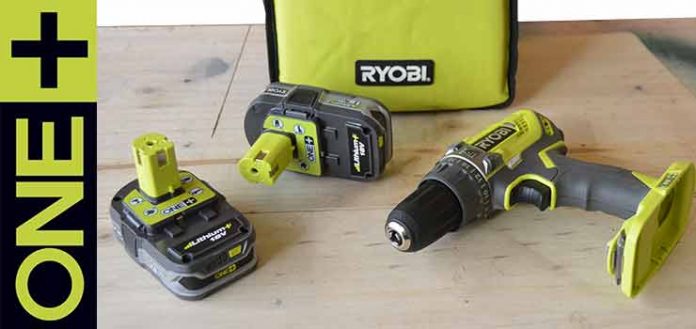
DIY power tools and cordless systems.
Before getting into the matter, I would like to start by drawing your attention to the trend, which is already becoming a reality. I am referring to wireless systems.
We only have to look around us to realize it.
The clearest example, we have it in WIFI technology, that has almost completely replaced the traditional wiring that has been used forever.
Well, the industry electric tools it was not going to be less. Manufacturers are betting on this system, not only in the professional segment, but also in the DIY range.
Thanks to R+D+I, battery-powered power tools have absolutely nothing to do with those that were marketed a few years ago, at least in the DIY range.
The ONE+ system
In line with the above, I will tell you about the efficient system that Ryobi markets for its range of battery power tools. The system called One+which is a single battery system.
This range of power tools covers not only the field of DIY, but also the field of gardening. The truth is that these two activities are intimately linked.
I will focus on DIY, since gardening is not my thing. What are you going to do, we must be honest and recognize our own limitations.
One+ unique battery system
What is the One+ system and what does it provide?
Ryobi has a range of power tools made up of more than 70 machines. Well, the One+ system makes it possible for each and every tool to share the same battery. That is, these batteries are compatible for the entire range.
What advantages does this unique battery system bring?
Among other aspects, we can draw attention to three that, according to our criteria, could be the main ones:
A significant money saver.
All Ryobi One+ Series tools can be purchased with or without batteries. Cheaper, therefore, in many cases the product.
Retrench of space.
Since we will only have to store a single charger, and one or two batteries. Later, we will talk about the recommended number of batteries that we should have.
Resource care.
And, thirdly, but not least, responsible care for the environment. By reducing the consumption of batteries, the manufacture of them is also reduced.
Batteries and charger
available batteries
We can choose between six sizes of batteries. When I say size, I am referring to power and autonomy.
Assuming that they are all 18V, we have the 1.3 Ah, which is the smallest, the 1.5, 2.0, 2.5, 4.0 and 5.0 Ah.
With these six batteries, we have all possible needs covered.
charging dock. Front and rear views.
chargers
Using the charger is very simple. It is very similar to other brands.
The red light on indicates that it is ready to use.
We just have to insert the battery down until it clicks, so that it starts charging. At this time the green indicator will begin to flash, and will continue to do so until charging is complete. Moment in which the indicator will be fixed.
To remove the battery, we only have to press the two buttons that it has on both sides.
Peculiarities
A detail that may seem silly but that, from my own experience, I can assure you that it is not, is the charge indicator tester.
One+ batteries have an indicator that shows their status at all times during the charging process.
Likewise, when the battery is out of the charging base, we can press the button and the charge indicator is displayed for about two seconds.
These batteries meet the expectations of both the home hobbyist, who makes small repairs sporadically. Even those of the most demanding DIYer, who carries out larger projects, and more continuously.
The different parts in the One+ series Batteries
Advice
In the case of using the Ryobi One+ range of tools very often, it is advisable to have two batteries. In this way, while we put the depleted battery to charge, we can continue using the tool with the other one.
Without going any further, I have two 1.5Amp batteries.
However, if you use the One+ power tools for short-term jobs or repairs, a single battery has plenty to spare.
New section preview
Well, after introducing this new battery system, let me tell you that we will be publishing articles on this blog, as well as videos on our YouTube channel, in which we will introduce you to the different tools in the Ryobi One+ range.
We will talk about the technical characteristics of each one, we will explain how to use it, the applications for which the tool is designed, we will show you the tests carried out and, of course, we will try to clarify any doubts or queries that you may have.
That said, we will start, of course, with the undisputed king of DIY: the drill.
Therefore, the next video will be dedicated to one of Ryobi’s 18V drill drivers. That is at the level of the most demanding DIYers.
We will start, as is often said on YouTube, with the unboxing & review. Or what is the same, unpacking and analysis. And we will continue to see the different parts, how to use it, and we will finish with some tests on different materials.
Don’t miss it because, as usual, we like to push the limits of the tools we test.
You can subscribe to both our Youtube channelas of our Blog. In this way, you will receive an email notification every time we publish a new article or video.
.
In the meantime, if you feel like it, in the article the corded drill We tell you in a generic way everything you need to know about this power tool.



